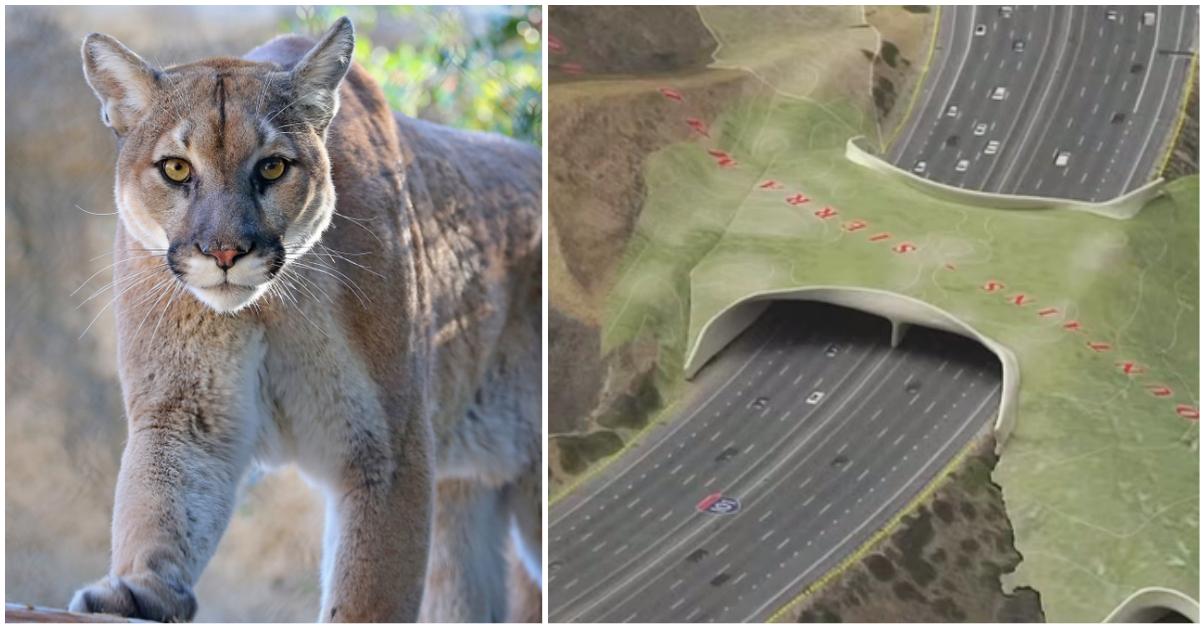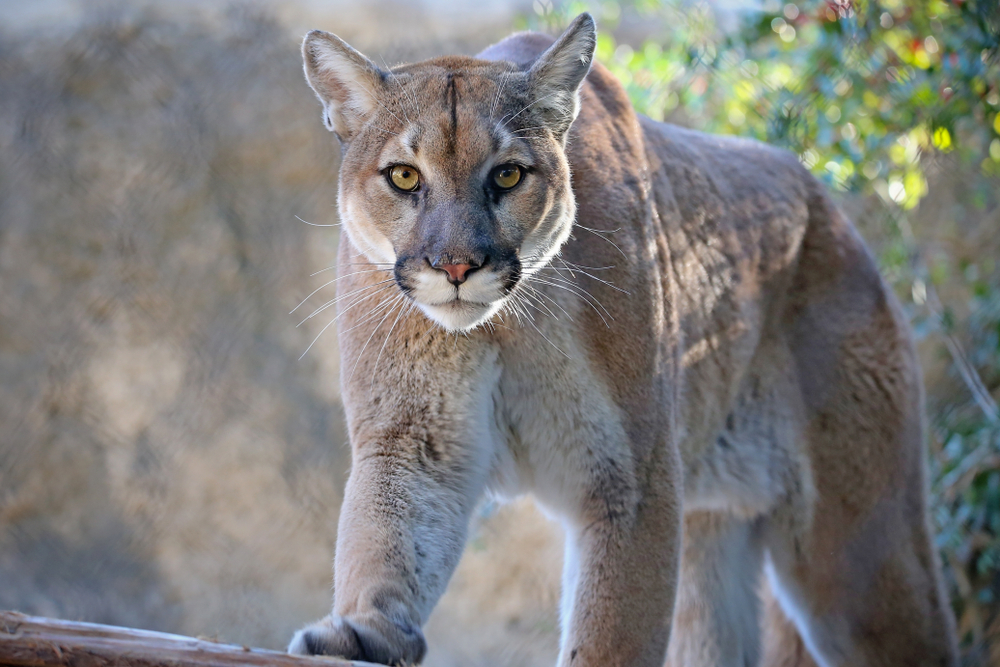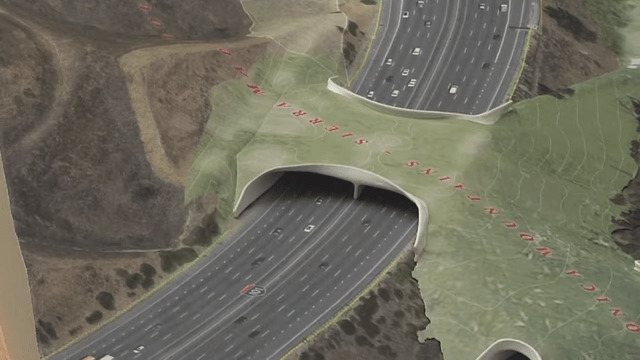
It’s widely known that human-made structures such as roads and buildings can disrupt local wildlife.
The loss of natural habitats can endanger species and lead them towards extinction, while busy highways can block animals from their regular migration routes.
Recognizing the impact of these structures on wildlife, a new bridge in California aims to mitigate some of the harm caused by human activities. It will allow animals to safely traverse a congested intersection.
The wildlife crossing to be constructed in Los Angeles is set to be the largest of its kind globally. Commencing next month, this initiative marks a significant win for the local population of mountain lions.
Named the “Wallis Annenberg Wildlife Crossing,” it will span the Ventura Freeway in Los Angeles, bridging ten lanes of heavy traffic to connect the Simi Hills and the Santa Monica Mountains.
The freeway has long hindered the movement of local mountain lions. In a report by the Los Angeles Times, it was stated that since 2002, numerous big cats have been killed by vehicles, leading to a decline in the species’ genetic diversity due to their inability to seek mates.
“They can’t get out to get a mate and the males can’t get in to get a mate… Anyone living in LA knows what it’s like to see a romantic encounter thwarted by heavy traffic,” mentioned Beth Pratt of the National Wildlife Federation to The Associated Press in 2019.
“When the highway went in, it severed an ecosystem. We’re just now seeing the ramifications of that.”

One of these affected mountain lions, named “P-22,” undertook a challenging journey across two freeways and settled in a park in Los Angeles. This lion became a symbol of how urban development had impacted wildlife, as reported by AP.
This inspired California to initiate the construction of a wildlife crossing. While constructing bridges to aid animal movement is not uncommon, the scale and magnitude of this particular project are unparalleled.
“Crossings like this are nothing new,” Pratt remarked to AP. “This one is historic because we’re putting it across one of the busiest freeways in the world.”
The bridge will offer a safe and convenient passage for mountain lions to move without interfering with human traffic. Apart from mountain lions, bobcats, coyotes, and deer will also benefit from this bridge.
Reportedly estimated to cost $90 million, the project will be predominantly funded by private donations, with the remaining funds sourced from public conservation allocations. The bridge is named after a generous philanthropist who contributed $25 million to the cause.
After years of planning, the construction of the bridge is finally on the horizon. Groundbreaking will occur on April 22, coinciding with Earth Day. The bridge is expected to be finished by 2025.
“California’s diverse native species and ecosystems have earned it recognition as a global hotspot for biodiversity,” stated California Governor Gavin Newsom as per AP.
“Amidst extreme climate impacts, it is more important than ever that we work together to protect our rich natural heritage.”
The bridge reportedly enjoys broad support within the state. Construction will take place during nighttime, minimizing the need for extensive traffic disruptions.

The bridge will be seamlessly integrated into the natural terrain, featuring eight acres of landscaping including shrubs and trees to harmoniously blend with the surrounding hills.
“Ideally, the animals will never realize they’re on a bridge,” explained architect Clark Stevens of the Resource Conservation District of the Santa Monica Mountains to AP in 2019.
“It’s landscape flowing over a freeway. It’s restoring a piece of the lost ecosystem.”
We are thrilled that the construction of this wildlife crossing is finally commencing. Anticipation is high for its completion, allowing mountain lions to roam freely in their natural habitat.
Share this incredible news if you’re passionate about animal welfare!



